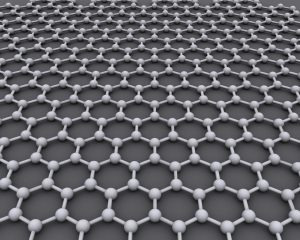There is a news items going around the various media right now concerned research at the University of Manchester in the UK. The research concerns the development and initial testing of a molecular sieve using the material Graphene for removing salt from seawater producing drinkable fresh water.
By itself this news is extremely important. It is estimated that over a billion people worldwide lack proper access to freshwater and that number is only going to increase in the years ahead. The sieve developed at the University of Manchester has to potential to greatly reduce of cost of producing freshwater from saltwater which could make it a key element in improving the lives of millions of people.
But that’s only a part of the story, for the sieve is composed of the material Graphene which many scientists have called a ‘Miracle’ material. Now Graphene is really just another form of the element Carbon, that wonderful atom that produces everything from fossil fuels to diamonds to life itself (after all, life is really just complex carbon compounds dissolved in water). What makes Graphene so special is that it is a one atom thick sheet of carbon atoms in a an endless hexagonal grid. See the picture below.

The holes in the structure obviously make it a excellent choice for a sieve but Graphene has a lot more going for it than that. Among it’s other properties Graphene is 200 times as strong as steel, although it is much lighter. Graphene also conducts both heat and electricity better than copper does. These are only a few of the properties that have material scientists so excited by Graphene and the material’s possible uses are the subject of a great deal of research at the present time. Personally I know of several manufacturers of semiconductor electronics who are spending a lot of money on developing components made of Graphene rather than silicon.
Now Graphene has been around a long time. In fact if you write with a graphite pencil (an ordinary pencil) you will on occasion produce a small fragment of Graphene. The problem is trying to produce large enough quantities of pure Graphene to become commercially valuable. But don’t worry, there are hundreds of brilliant material scientists hard at work and you can be sure that in the years ahead you’re going to hear a lot more about Graphene. If you’d like to read more about the Graphene sieve click on the link below to go to the official announcement from Manchester University.
http://www.manchester.ac.uk/discover/news/graphene-sieve-turns-seawater-into-drinking-water/
Before I go today I’d like to take a minute or two to talk about this blog ‘Science and Science Fiction’. Not only have I just reached 1500 registered subscribers but there have been some very complimentary comments submitted and I just want to thank you all for you encouragement and kind words. This blog is not yet 8 months old but it’s already far exceeded my expectations and that is all because or you so thanks again.
However, I like to say that every silver lining has a cloud around it and the cloud around the internet in general is the spammers and hackers who apparently are only happy when they’re making other people miserable.
In addition to many kind and insightful comments there have been some that either try to use my site to make them money or which are simply obscene. I can assure you those comments go immediately in the trash.
Now however it appears there are spammers out there trying to use ‘Science and Science Fiction’ to infect other sites and I’m going to be forced to install a form of security called CAPTCHA on my registration and comments links. To my friends out there I apologize and to those of you who made this necessary congratulations, you succeeded in making the world a little bit worse!
